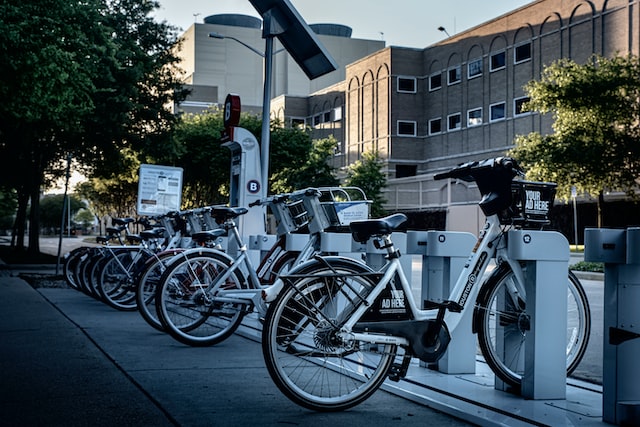Although compared to other economic sectors of the transportation business, electric mobility and the electric bike industry are still relatively young, the buzz surrounding e-bikes has started to pick up steam in the past year, and with good reason. Now that so many people want to buy bikes, it’s critical to comprehend the fundamentals of metrics in order to choose the ideal electric bike for you and your requirements.
Therefore, we have put up a blog series that will assist our audience in understanding, comparing, and selecting their ideal electric bike in order to help our readers make an informed decision before making their purchase. To help you focus your search, we will compare each of the ten or so most well-known e-bikes in various categories throughout this series using predetermined criteria. Additionally, we created a comparison table so that readers may easily assess any e-bike that we haven’t included in our series.
We will define the standards by which we will evaluate each bike before we begin our first blog in the series. Let’s begin straight away!
Style & Design
Style and design should be taken into consideration before buying, just like with any other product on the market. Buyers of e-bikes must therefore decide whether they prefer a bike with a sleek, modern design or one that has a more traditional and vintage aspect.
Ergonomics
Efficiency and rider comfort are the two key components of ergonomics. To make sure that the performance and comfort of an electric bike aren’t compromised in the design, consumers should look at the bike’s geometry, frame curves, seat, pedals, and handlebar position. In order to guarantee that the bike’s overall performance will meet the rider’s needs, it is essential to make sure the bike is easily adjusted to the rider. This part would also take into account components that improve ride comfort and quality, such as suspension forks, saddles, handlebars, and tyre types.
Performance + TORQUE
The majority of street-legal electric bikes on the market deliver maximum power. For the uninitiated, government laws that essentially permit people to use electric bikes on the street without a driver’s licence limit the speed and power of the vehicles. Power will not be covered by our purview as a result. We are solely concentrating on electric bikes that are street legal.
On the other hand, the need for torque at the wheel is equal to that of power. And the government does not have many regulations regarding electric bikes. The maximum torque that may be applied to the wheel can vary depending on the motor, controller, and transmission designs. The electric bike can then easily climb slopes as a result. Even while hub motors are more dependable, they might vary greatly in terms of power density or the amount of torque produced. Mid-drive systems use bicycle transmission, but depending on the motor and gearing, they can deliver more or less torque to the wheel.
Range & Efficiency
In general, a higher range per single charge will be achieved with more battery cells or capacity. The electric bike will certainly become heavier as a result. In general, the e-bike range varies depending on the kind of road, the rider’s weight, tyre pressure, wind resistance, level of help, speed, and pedal-assist power.
The design factors for e-bikes, such as battery capacity in Wh or Ah, motor/control power, gross weight, tyre width/roughness, battery efficiency, motor/control efficiency, hub bearings, and pedal-assist control system, can also affect how far an e-bike can go.
Controls & Monitoring
We refer to parameter settings, monitoring, visualisation, and diagnostics provided by the electric bike interface when we talk about controls and monitoring. We are also discussing data accuracy, user-friendliness, and interface accuracy. When contrasting bikes, take power-on-demand throttle and pedal-assist technologies into account as well.
Component Grade
Although they have a similar design, bikes differ in terms of strength, performance, durability, and quality. Buyers must therefore also examine the brand and type of the batteries, tyres, and transmission. However, a higher component grade will typically come at a larger cost; as a result, consumers must also take their preferences into account.
Braking Performance

While there are many other types of stopping systems used for bicycles, electric bikes mostly employ what is known as a disc brake. Disk brakes can be mechanical or hydraulic, and they can also be grouped according to the brake’s manufacturer and the size of the disc rotor. A far more effective braking performance is generally provided by hydraulic brakes with a bigger rotor size, which is essential for comfort and safety. However, they could require more work to fix than mechanical braking systems do.
Price Range
Finally, it’s important to remember that an e-bike that costs more may not always be of greater quality. However, readers will be able to compare their options for e-bikes before making a purchase by keeping the previously mentioned criteria in mind. Make sure you get value for your money.
Final Reflections
As you can see, buying your first electric bike requires careful consideration. However, readers will be able to make an informed choice before making their purchase by using the introduced parameter guide and reading the remaining articles in our series. Think of this as a toolkit or selection guide for e-bikes. You will be able to compare your selections after reading the score examples, even if they are not on our list. Additionally, you can test out your own system of grading depending on your own objectives and preferences.
Read also: Quantum physics: What Is It?

















